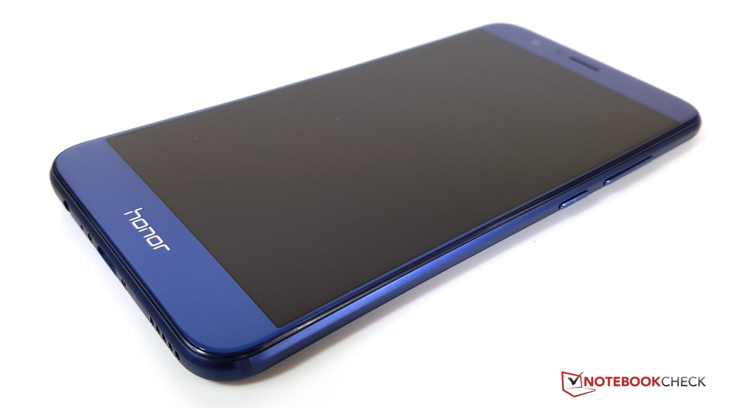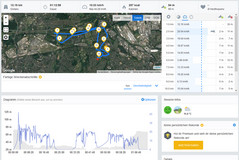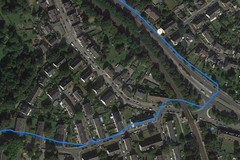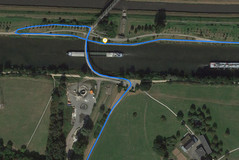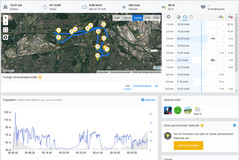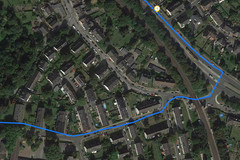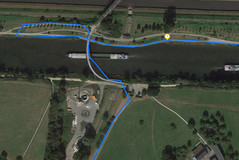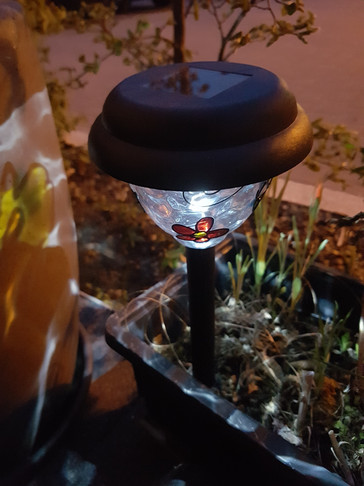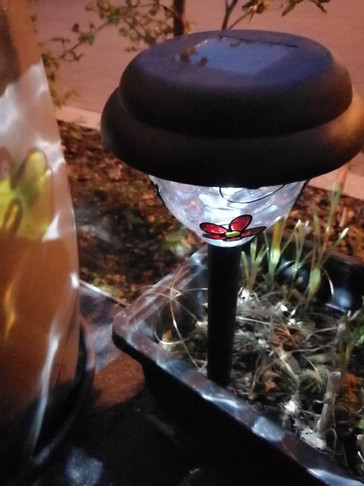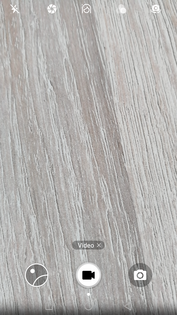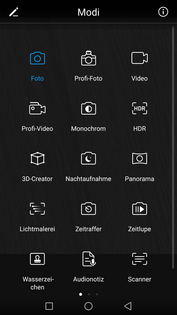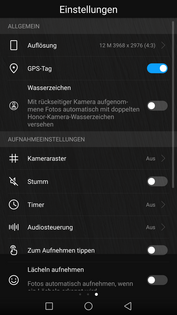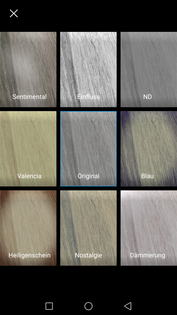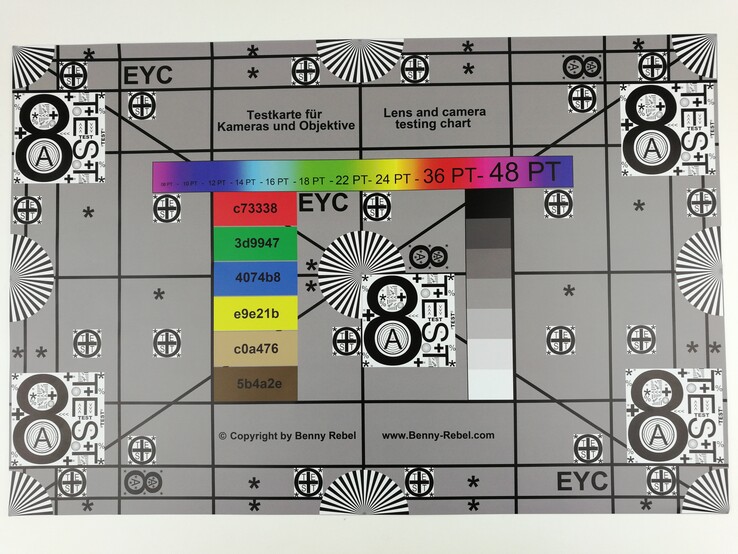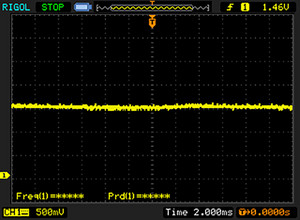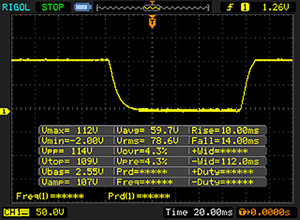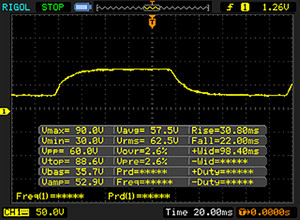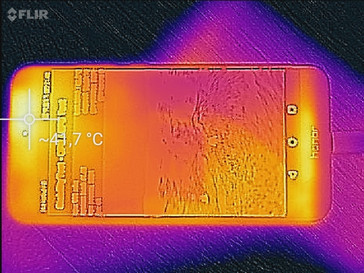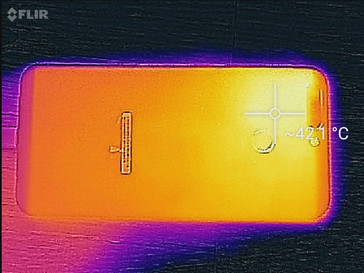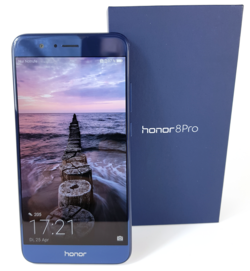Breve Análise do Smartphone Honor 8 Pro
Os Top 10
» Os Top 10 Portáteis Multimídia
» Os Top 10 Portáteis de Jogos
» Os Top 10 Portáteis Leves para Jogos
» Os Top 10 Portáteis Acessíveis de Escritório/Empresariais
» Os Top 10 Portáteis Premium de Escritório/Empresariais
» Os Top 10 dos Portáteis Workstation
» Os Top 10 Subportáteis
» Os Top 10 Ultrabooks
» Os Top 10 Conversíveis
» Os Top 10 Tablets
» Os Top 10 Smartphones
» A melhores Telas de Portáteis Analisadas Pela Notebookcheck
» Top 10 dos portáteis abaixo dos 500 Euros da Notebookcheck
» Top 10 dos Portáteis abaixo dos 300 Euros
Size Comparisons
| Networking | |
| iperf3 transmit AX12 | |
| Samsung Galaxy S8 Plus | |
| Huawei P10 | |
| Samsung Galaxy S7 Edge | |
| OnePlus 3T | |
| HTC U Play | |
| Honor 8 Pro | |
| iperf3 receive AX12 | |
| Samsung Galaxy S8 Plus | |
| Huawei P10 | |
| Samsung Galaxy S7 Edge | |
| OnePlus 3T | |
| HTC U Play | |
| Honor 8 Pro | |
| |||||||||||||||||||||||||
iluminação: 91 %
iluminação com acumulador: 541 cd/m²
Contraste: 1803:1 (Preto: 0.3 cd/m²)
ΔE ColorChecker Calman: 3.2 | ∀{0.5-29.43 Ø4.78}
ΔE Greyscale Calman: 4 | ∀{0.09-98 Ø5}
Gamma: 2.27
CCT: 7120 K
| Honor 8 Pro IPS, 2560x1440, 5.7" | Huawei P10 LTPS, 1920x1080, 5.1" | Huawei P9 Plus AMOLED, 1920x1080, 5.5" | HTC U Play Super LCD, 1920x1080, 5.2" | HTC 10 Super LCD 5, 2560x1440, 5.2" | Samsung Galaxy S7 Edge Super AMOLED, 2560x1440, 5.5" | Samsung Galaxy S8 Plus Super AMOLED, 2960x1440, 6.2" | OnePlus 3T Optic-AMOLED, 1920x1080, 5.5" | Lenovo Moto Z AMOLED, 2560x1440, 5.5" | |
|---|---|---|---|---|---|---|---|---|---|
| Screen | -19% | -34% | -20% | -6% | 30% | 29% | -59% | 13% | |
| Brightness middle (cd/m²) | 541 | 547 1% | 361 -33% | 424 -22% | 445 -18% | 554 2% | 560 4% | 421 -22% | 485 -10% |
| Brightness (cd/m²) | 514 | 556 8% | 366 -29% | 432 -16% | 434 -16% | 552 7% | 562 9% | 430 -16% | 490 -5% |
| Brightness Distribution (%) | 91 | 86 -5% | 87 -4% | 90 -1% | 93 2% | 96 5% | 93 2% | 84 -8% | 92 1% |
| Black Level * (cd/m²) | 0.3 | 0.43 -43% | 0.25 17% | 0.36 -20% | |||||
| Contrast (:1) | 1803 | 1272 -29% | 1696 -6% | 1236 -31% | |||||
| Colorchecker dE 2000 * | 3.2 | 4.8 -50% | 5.1 -59% | 5.7 -78% | 2.8 12% | 1.59 50% | 1.7 47% | 7.1 -122% | 2.1 34% |
| Colorchecker dE 2000 max. * | 7.2 | 8.8 -22% | 10 -39% | 10.8 -50% | 5.8 19% | 2.56 64% | 3.4 53% | 15.3 -113% | 5.5 24% |
| Greyscale dE 2000 * | 4 | 4.5 -13% | 5.5 -38% | 4.1 -3% | 3.7 7% | 2.01 50% | 1.6 60% | 6.8 -70% | 2.6 35% |
| Gamma | 2.27 97% | 2.39 92% | 2.24 98% | 2.32 95% | 2.31 95% | 2.01 109% | 2.13 103% | 2.23 99% | 2.23 99% |
| CCT | 7120 91% | 7194 90% | 7388 88% | 7359 88% | 7164 91% | 6321 103% | 6435 101% | 7866 83% | 6843 95% |
| Color Space (Percent of AdobeRGB 1998) (%) | 82.12 | 81.57 | 88.14 | ||||||
| Color Space (Percent of sRGB) (%) | 99.98 | 99.87 | 100 |
* ... menor é melhor
Cintilação da tela / PWM (modulação por largura de pulso)
| Tela tremeluzindo / PWM não detectado | |||
[pwm_comparison] Em comparação: 53 % de todos os dispositivos testados não usam PWM para escurecer a tela. Se PWM foi detectado, uma média de 8111 (mínimo: 5 - máximo: 343500) Hz foi medida. | |||
Exibir tempos de resposta
| ↔ Tempo de resposta preto para branco | ||
|---|---|---|
| 24 ms ... ascensão ↗ e queda ↘ combinadas | ↗ 10 ms ascensão | |
| ↘ 14 ms queda | ||
| A tela mostra boas taxas de resposta em nossos testes, mas pode ser muito lenta para jogadores competitivos. Em comparação, todos os dispositivos testados variam de 0.1 (mínimo) a 240 (máximo) ms. » 53 % de todos os dispositivos são melhores. Isso significa que o tempo de resposta medido é pior que a média de todos os dispositivos testados (20.2 ms). | ||
| ↔ Tempo de resposta 50% cinza a 80% cinza | ||
| 52.8 ms ... ascensão ↗ e queda ↘ combinadas | ↗ 30.8 ms ascensão | |
| ↘ 22 ms queda | ||
| A tela mostra taxas de resposta lentas em nossos testes e será insatisfatória para os jogadores. Em comparação, todos os dispositivos testados variam de 0.165 (mínimo) a 636 (máximo) ms. » 89 % de todos os dispositivos são melhores. Isso significa que o tempo de resposta medido é pior que a média de todos os dispositivos testados (31.6 ms). | ||
| AnTuTu v6 - Total Score (classificar por valor) | |
| Honor 8 Pro | |
| Huawei P10 | |
| Huawei P9 Plus | |
| HTC U Play | |
| HTC 10 | |
| Samsung Galaxy S7 Edge | |
| Samsung Galaxy S8 Plus | |
| OnePlus 3T | |
| Lenovo Moto Z | |
| Geekbench 4.0 | |
| 64 Bit Single-Core Score (classificar por valor) | |
| Huawei P10 | |
| HTC U Play | |
| Samsung Galaxy S7 Edge | |
| Samsung Galaxy S8 Plus | |
| OnePlus 3T | |
| Lenovo Moto Z | |
| 64 Bit Multi-Core Score (classificar por valor) | |
| Huawei P10 | |
| HTC U Play | |
| Samsung Galaxy S7 Edge | |
| Samsung Galaxy S8 Plus | |
| OnePlus 3T | |
| Lenovo Moto Z | |
| Geekbench 4.4 | |
| 64 Bit Multi-Core Score (classificar por valor) | |
| Honor 8 Pro | |
| Huawei P10 | |
| HTC 10 | |
| Samsung Galaxy S8 Plus | |
| 64 Bit Single-Core Score (classificar por valor) | |
| Honor 8 Pro | |
| Huawei P10 | |
| HTC 10 | |
| Samsung Galaxy S8 Plus | |
| GFXBench (DX / GLBenchmark) 2.7 | |
| T-Rex Onscreen (classificar por valor) | |
| Honor 8 Pro | |
| Huawei P10 | |
| Huawei P9 Plus | |
| HTC U Play | |
| HTC 10 | |
| Samsung Galaxy S7 Edge | |
| Samsung Galaxy S8 Plus | |
| OnePlus 3T | |
| Lenovo Moto Z | |
| 1920x1080 T-Rex Offscreen (classificar por valor) | |
| Honor 8 Pro | |
| Huawei P10 | |
| Huawei P9 Plus | |
| HTC U Play | |
| HTC 10 | |
| Samsung Galaxy S7 Edge | |
| Samsung Galaxy S8 Plus | |
| OnePlus 3T | |
| Lenovo Moto Z | |
| GFXBench 3.0 | |
| on screen Manhattan Onscreen OGL (classificar por valor) | |
| Honor 8 Pro | |
| Huawei P10 | |
| Huawei P9 Plus | |
| HTC U Play | |
| HTC 10 | |
| Samsung Galaxy S7 Edge | |
| Samsung Galaxy S8 Plus | |
| OnePlus 3T | |
| Lenovo Moto Z | |
| 1920x1080 1080p Manhattan Offscreen (classificar por valor) | |
| Honor 8 Pro | |
| Huawei P10 | |
| Huawei P9 Plus | |
| HTC U Play | |
| HTC 10 | |
| Samsung Galaxy S7 Edge | |
| Samsung Galaxy S8 Plus | |
| OnePlus 3T | |
| Lenovo Moto Z | |
| GFXBench 3.1 | |
| on screen Manhattan ES 3.1 Onscreen (classificar por valor) | |
| Honor 8 Pro | |
| Huawei P10 | |
| Huawei P9 Plus | |
| HTC U Play | |
| HTC 10 | |
| Samsung Galaxy S7 Edge | |
| Samsung Galaxy S8 Plus | |
| OnePlus 3T | |
| Lenovo Moto Z | |
| 1920x1080 Manhattan ES 3.1 Offscreen (classificar por valor) | |
| Honor 8 Pro | |
| Huawei P10 | |
| Huawei P9 Plus | |
| HTC U Play | |
| HTC 10 | |
| Samsung Galaxy S7 Edge | |
| Samsung Galaxy S8 Plus | |
| OnePlus 3T | |
| Lenovo Moto Z | |
| PCMark for Android - Work performance score (classificar por valor) | |
| Honor 8 Pro | |
| Huawei P10 | |
| Huawei P9 Plus | |
| HTC U Play | |
| HTC 10 | |
| Samsung Galaxy S7 Edge | |
| Samsung Galaxy S8 Plus | |
| OnePlus 3T | |
| Lenovo Moto Z | |
| Octane V2 - Total Score | |
| Samsung Galaxy S8 Plus | |
| Samsung Galaxy S7 Edge | |
| Huawei P9 Plus | |
| Huawei P10 | |
| Honor 8 Pro | |
| OnePlus 3T | |
| HTC 10 | |
| Lenovo Moto Z | |
| HTC U Play | |
| Mozilla Kraken 1.1 - Total | |
| HTC U Play | |
| Honor 8 Pro | |
| Lenovo Moto Z | |
| HTC 10 | |
| Huawei P10 | |
| Huawei P9 Plus | |
| OnePlus 3T | |
| Samsung Galaxy S7 Edge | |
| Samsung Galaxy S8 Plus | |
| JetStream 1.1 - Total Score | |
| Samsung Galaxy S7 Edge | |
| Huawei P9 Plus | |
| Samsung Galaxy S8 Plus | |
| Honor 8 Pro | |
| Huawei P10 | |
| OnePlus 3T | |
| HTC 10 | |
| Lenovo Moto Z | |
| HTC U Play | |
| WebXPRT 2015 - Overall | |
| Samsung Galaxy S7 Edge | |
| Samsung Galaxy S8 Plus | |
| Honor 8 Pro | |
| Huawei P10 | |
| OnePlus 3T | |
| Huawei P9 Plus | |
| Lenovo Moto Z | |
| HTC 10 | |
* ... menor é melhor
| Honor 8 Pro Mali-G71 MP8, Kirin 960, 64 GB UFS 2.1 Flash | Huawei P10 Mali-G71 MP8, Kirin 960, 64 GB UFS 2.1 Flash | Huawei P9 Plus Mali-T880 MP4, Kirin 955, 64 GB eMMC Flash | HTC U Play Mali-T860 MP2, Helio P10 MT6755, 32 GB eMMC Flash | HTC 10 Adreno 530, 820 MSM8996, 32 GB eMMC Flash | Samsung Galaxy S7 Edge Mali-T880 MP12, Exynos 8890, 32 GB UFS 2.0 Flash | Samsung Galaxy S8 Plus Mali-G71 MP20, Exynos 8895, 64 GB UFS 2.1 Flash | OnePlus 3T Adreno 530, SD 821, 64 GB UFS 2.0 Flash | Lenovo Moto Z Adreno 530, 820 MSM8996, 32 GB eMMC Flash | |
|---|---|---|---|---|---|---|---|---|---|
| AndroBench 3-5 | 0% | -39% | -51% | -19% | -16% | 1% | -33% | -7% | |
| Sequential Write 256KB SDCard (MB/s) | 32.16 | 32.19 0% | 24.95 -22% | 23.6 -27% | 65.4 103% | 50.4 57% | 57.2 78% | 45.64 42% | |
| Sequential Read 256KB SDCard (MB/s) | 54.2 | 54.2 0% | 62.5 15% | 36.8 -32% | 83.3 54% | 76.4 41% | 71.1 31% | 78.5 45% | |
| Random Write 4KB (MB/s) | 151.6 | 152.3 0% | 51.2 -66% | 52.7 -65% | 15.89 -90% | 15.79 -90% | 15.27 -90% | 74.4 -51% | 74.9 -51% |
| Random Read 4KB (MB/s) | 166.4 | 168.4 1% | 39.33 -76% | 32 -81% | 29.92 -82% | 86.7 -48% | 127.2 -24% | 123.6 -26% | 117.2 -30% |
| Sequential Write 256KB (MB/s) | 187.1 | 189.8 1% | 140.4 -25% | 135.5 -28% | 115.6 -38% | 145.1 -22% | 194.2 4% | 165.3 -12% | 168.3 -10% |
| Sequential Read 256KB (MB/s) | 738 | 738 0% | 284.3 -61% | 197.3 -73% | 275.1 -63% | 487.3 -34% | 788 7% | 436.4 -41% | 439.7 -40% |
| Dead Trigger 2 | |||
| Configurações | Valor | ||
| high | 30 fps | ||
| Asphalt 8: Airborne | |||
| Configurações | Valor | ||
| high | 29 fps | ||
| very low | 29 fps | ||
(±) A temperatura máxima no lado superior é 44.8 °C / 113 F, em comparação com a média de 35.2 °C / 95 F , variando de 21.9 a 247 °C para a classe Smartphone.
(±) A parte inferior aquece até um máximo de 41.2 °C / 106 F, em comparação com a média de 34 °C / 93 F
(±) Em uso inativo, a temperatura média para o lado superior é 33.3 °C / 92 F, em comparação com a média do dispositivo de 32.9 °C / ### class_avg_f### F.
Honor 8 Pro análise de áudio
(+) | os alto-falantes podem tocar relativamente alto (###valor### dB)
Graves 100 - 315Hz
(-) | quase nenhum baixo - em média 25.4% menor que a mediana
(-) | graves não são lineares (15.3% delta para frequência anterior)
Médios 400 - 2.000 Hz
(+) | médios equilibrados - apenas 3.4% longe da mediana
(+) | médios são lineares (6% delta para frequência anterior)
Altos 2 - 16 kHz
(±) | máximos mais altos - em média 5.4% maior que a mediana
(±) | a linearidade dos máximos é média (7% delta para frequência anterior)
Geral 100 - 16.000 Hz
(±) | a linearidade do som geral é média (23.6% diferença em relação à mediana)
Comparado com a mesma classe
» 53% de todos os dispositivos testados nesta classe foram melhores, 8% semelhantes, 39% piores
» O melhor teve um delta de 11%, a média foi 35%, o pior foi 134%
Comparado com todos os dispositivos testados
» 70% de todos os dispositivos testados foram melhores, 6% semelhantes, 24% piores
» O melhor teve um delta de 4%, a média foi 24%, o pior foi 134%
Huawei P10 análise de áudio
(+) | os alto-falantes podem tocar relativamente alto (###valor### dB)
Graves 100 - 315Hz
(-) | quase nenhum baixo - em média 20.9% menor que a mediana
(±) | a linearidade dos graves é média (12.6% delta para a frequência anterior)
Médios 400 - 2.000 Hz
(+) | médios equilibrados - apenas 4.2% longe da mediana
(+) | médios são lineares (6% delta para frequência anterior)
Altos 2 - 16 kHz
(±) | máximos mais altos - em média 5.5% maior que a mediana
(+) | os máximos são lineares (4.9% delta da frequência anterior)
Geral 100 - 16.000 Hz
(±) | a linearidade do som geral é média (23.6% diferença em relação à mediana)
Comparado com a mesma classe
» 53% de todos os dispositivos testados nesta classe foram melhores, 8% semelhantes, 39% piores
» O melhor teve um delta de 11%, a média foi 35%, o pior foi 134%
Comparado com todos os dispositivos testados
» 70% de todos os dispositivos testados foram melhores, 6% semelhantes, 24% piores
» O melhor teve um delta de 4%, a média foi 24%, o pior foi 134%
OnePlus 3T análise de áudio
(+) | os alto-falantes podem tocar relativamente alto (###valor### dB)
Graves 100 - 315Hz
(-) | quase nenhum baixo - em média 24.6% menor que a mediana
(±) | a linearidade dos graves é média (7.2% delta para a frequência anterior)
Médios 400 - 2.000 Hz
(+) | médios equilibrados - apenas 4.6% longe da mediana
(+) | médios são lineares (4.6% delta para frequência anterior)
Altos 2 - 16 kHz
(±) | máximos mais altos - em média 7.1% maior que a mediana
(+) | os máximos são lineares (2.8% delta da frequência anterior)
Geral 100 - 16.000 Hz
(±) | a linearidade do som geral é média (20.9% diferença em relação à mediana)
Comparado com a mesma classe
» 38% de todos os dispositivos testados nesta classe foram melhores, 8% semelhantes, 54% piores
» O melhor teve um delta de 11%, a média foi 35%, o pior foi 134%
Comparado com todos os dispositivos testados
» 56% de todos os dispositivos testados foram melhores, 8% semelhantes, 36% piores
» O melhor teve um delta de 4%, a média foi 24%, o pior foi 134%
| desligado | |
| Ocioso | |
| Carga |
|
Key:
min: | |
| Honor 8 Pro 4000 mAh | Huawei P10 3200 mAh | Huawei P9 Plus 3400 mAh | HTC U Play 2500 mAh | HTC 10 3000 mAh | Samsung Galaxy S7 Edge 3600 mAh | Samsung Galaxy S8 Plus 3500 mAh | OnePlus 3T 3400 mAh | Lenovo Moto Z 2600 mAh | |
|---|---|---|---|---|---|---|---|---|---|
| Power Consumption | 8% | 35% | 23% | 15% | 33% | 42% | 15% | 40% | |
| Idle Minimum * (Watt) | 0.98 | 0.83 15% | 0.87 11% | 0.92 6% | 0.68 31% | 0.63 36% | 0.68 31% | 0.61 38% | 0.66 33% |
| Idle Average * (Watt) | 2.27 | 2.1 7% | 1.2 47% | 1.84 19% | 1.49 34% | 1.1 52% | 1.13 50% | 1.77 22% | 1.01 56% |
| Idle Maximum * (Watt) | 2.36 | 2.18 8% | 1.27 46% | 2 15% | 1.91 19% | 1.56 34% | 1.16 51% | 1.81 23% | 1.09 54% |
| Load Average * (Watt) | 6.58 | 6.57 -0% | 4.69 29% | 4.3 35% | 7.4 -12% | 5.95 10% | 4.69 29% | 6.67 -1% | 3.97 40% |
| Load Maximum * (Watt) | 10.12 | 9.32 8% | 5.63 44% | 6.2 39% | 9.71 4% | 6.7 34% | 5.24 48% | 10.98 -8% | 8.34 18% |
* ... menor é melhor
| Honor 8 Pro 4000 mAh | Huawei Mate 9 4000 mAh | Huawei P10 3200 mAh | Huawei P9 Plus 3400 mAh | HTC U Play 2500 mAh | HTC 10 3000 mAh | Samsung Galaxy S8 Plus 3500 mAh | OnePlus 3T 3400 mAh | Lenovo Moto Z 2600 mAh | |
|---|---|---|---|---|---|---|---|---|---|
| Duração da bateria | 26% | 16% | 15% | -6% | -7% | 26% | 16% | 14% | |
| Reader / Idle (h) | 23 | 25.6 11% | 25.7 12% | 24.1 5% | 21.7 -6% | 21.2 -8% | 26.1 13% | 23.7 3% | 22.9 0% |
| H.264 (h) | 11.3 | 15.8 40% | 9.7 -14% | 12.9 14% | 8.6 -24% | 10.8 -4% | 12.4 10% | 13.5 19% | 12.1 7% |
| WiFi v1.3 (h) | 9.6 | 12.6 31% | 16.1 68% | 8.8 -8% | 7.9 -18% | 6.9 -28% | 12.3 28% | 8.2 -15% | 6.8 -29% |
| Load (h) | 3 | 3.7 23% | 2.9 -3% | 4.4 47% | 3.7 23% | 3.4 13% | 4.6 53% | 4.7 57% | 5.3 77% |
Pro
Contra
O Honor 8 Pro é um smartphone de gama alta bem construído com excelente desempenho do sistema e com visual de sucesso. Comparado com aparelhos atuais e alguns dos aparelhos de gama alta do ano passado, temos que nos conformar com menos em muitas áreas, apesar de sua ampla memória de trabalho de 6 GB.
No Honor 8 Pro, (ainda) não vemos a excelente razão preço-desempenho pela qual os aparelhos Honor são conhecidos. Os smartphones de gama alta do ano passado (como o Samsung Galaxy S7 Edge) algumas vezes oferecem um melhor pacote geral por menos dinheiro, considerando que esses aparelhos já passaram pela maior queda de seus preços.
Recursos como Bluetooth 4.2 em vez de 5.0, a unidade gráfica comparativamente "fraca", uma câmera frontal sem autofoco, e o padrão USB-2.0 diferencia o Honor 8 Pro dos atuais smartphones carros chefe de outros fabricantes. Além disso, a bateria não pode ser carregada sem fio, e o aparelho não é certificado de acordo com o padrão IP e, portanto, não é protegido contra a poeira e água. As bordas da carcaça são um pouco grandes e o formato da tela com a frente é relativamente ineficiente, pelo menos para um aparelho do ano 2017.
Em resumo, o Honor 8 Pro é um smartphone muito bem sucedido e uma alternativa recomendável aos aparelhos Huawei P10. No entanto, em nossa opinião, não é um ataque nos melhores smartphones carros chefe de 2017.
Sem importar isso, a política da Huawei de remover componentes deixa um mal sabor – se todos os compradores do Honor-8-Pro sentirão o prazer do moderno armazenamento UFS-2.1 ainda é questionável.
Honor 8 Pro
- 05/04/2017 v6 (old)
Marcus Herbrich




